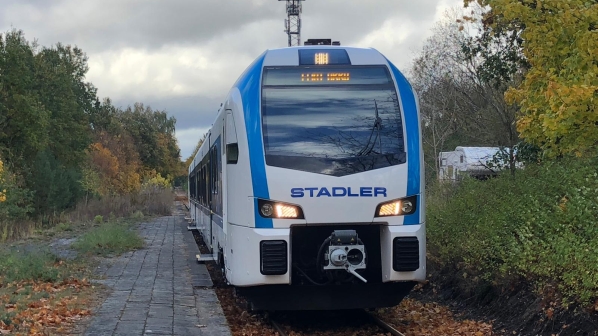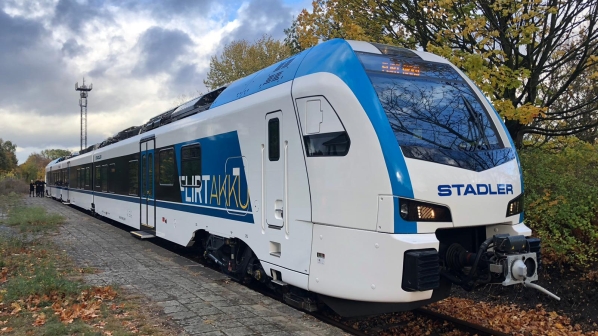Stadler says the trip represents a major step for the company in the field of alternative drives, and meets growing demand for green technology. The Flirt Akku is based on the standard Flirt EMU with the traction equipment and mechanical components largely retained, albeit with a redesigned powertrain and battery drive.
Designed for use on non-electrified or partially-electrified routes, Stadler says the prototype has a range of 80km at a driving speed of up to 140km/h in pure battery mode, and the vehicle can operate on 80% of the non-electrified routes in Germany.
The batteries can be charged during operation under overhead lines and at non-electrified terminus stations. The batteries can also fed by the regenerative braking system.
Stadler says the Flirt Akku is suited for operation on routes currently used DMUs, and noise emissions are considerably lower than those of comparable diesel trains. The three-car prototype Flirt Akku accommodates 310 passengers, 154 of them seated.

The prototype is authorised for passenger operation and will begin operating on selected routes in 2019. Stadler says it sees market opportunities for the Flirt Akku in Germany, Austria, Britain, the Netherlands, Italy and other countries with significant non-electrified mileage.
The Flirt Akku was developed in-house by Stadler with the aid of €2m in funding from the German Federal Ministry of Economics and Technology.

